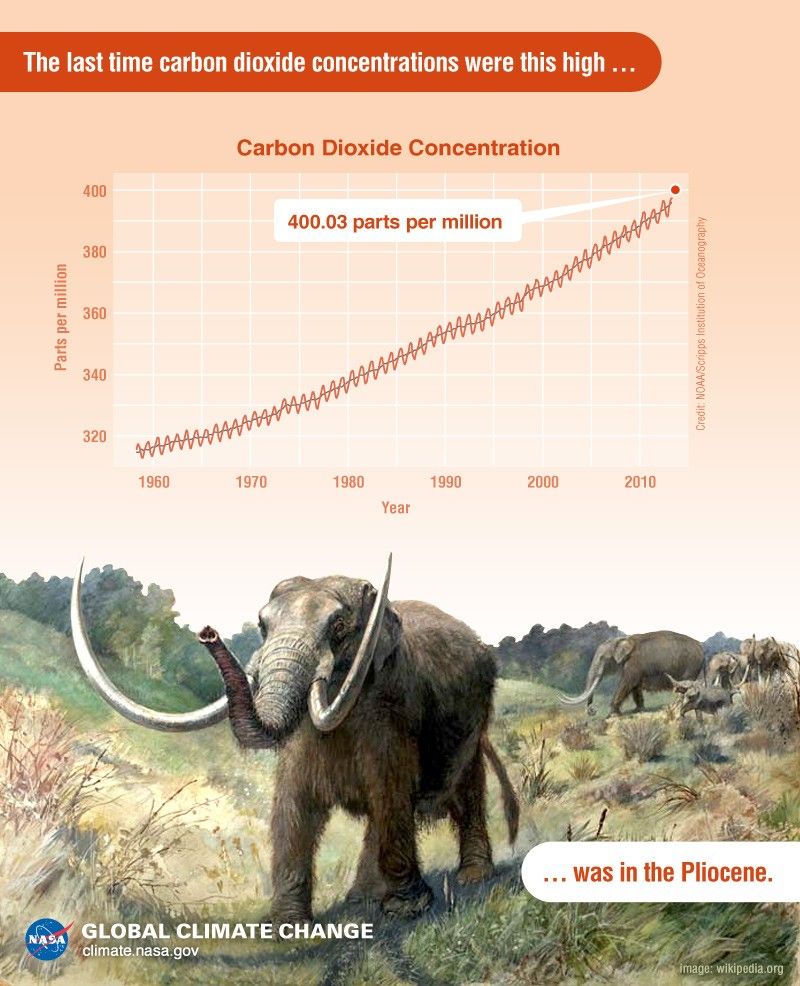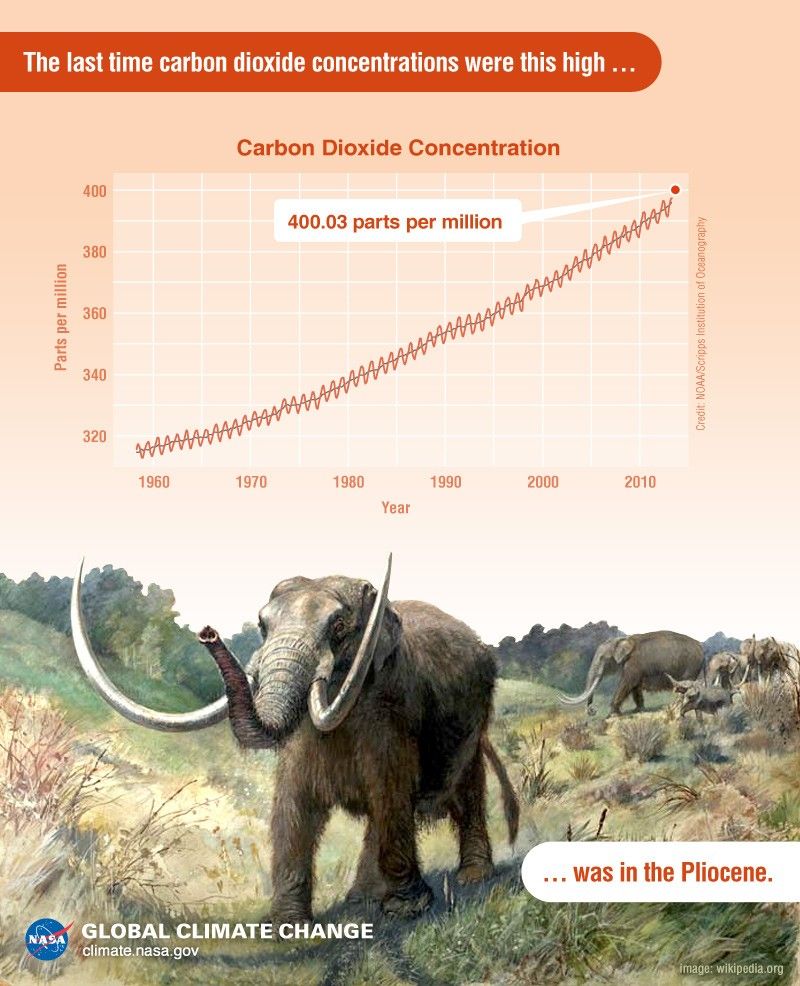Graphic: Carbon dioxide hits new high
| Credit | NASA Climate Change website. |
|---|---|
| Language |
|
Imagine there are no people. Imagine a planet where the sea level is about five to 40 meters (16 to 131 feet) higher than normal. Imagine a planet that is hotter and wetter. Imagine, worldwide, it’s roughly 3 to 4 degrees Celsius (5.4 to 7.2 degrees Fahrenheit) warmer than today. And the North and South poles are even warmer still – as much as 10 degrees Celsius (18 degrees Fahrenheit) hotter than today.
Welcome to the Pliocene. That was the Earth about three to five million years ago, very different to the Earth we inhabit now. But in at least one respect it was rather similar. This is the last time that carbon dioxide (CO2) levels were as high as they are today.
On May 9, 2013, CO2 levels in the air reached the level of 400 parts per million (ppm). This is the first time in human history that this milestone has been passed.
CO2 is the most important man-made greenhouse gas, which means (in a simple sense) that it acts like a blanket trapping heat near the surface of the Earth. It comes from the burning of fossil fuels such as coal, oil and natural gas, as well as deforestation. The level of CO2 in the atmosphere has risen from around 317 ppm in 1958 (when Charles David Keeling began making his historical measurements at Mauna Loa) to 400 ppm today. It’s projected to reach 450 ppm by the year 2040.
To some, crossing the threshold of 400 ppm is a signal that we are now firmly seated in the “Anthropocene,” a human epoch where people are having major and lasting impacts on the planet. Because of the long lifetime of CO2, to others it means we are marching inexorably towards a “point of no return,” into territory that is unknown for the human race.






























